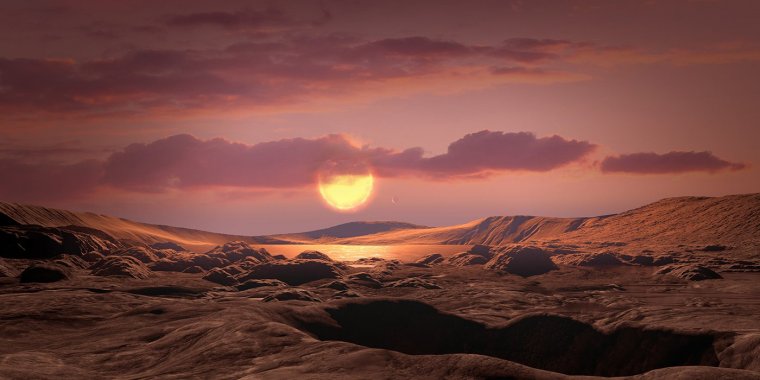| News / Space News |
Earth-Size, Habitable-Zone Planet Found Hidden in Early NASA Kepler Data
Scientists, using reanalyzed data from NASA's Kepler space telescope, has discovered an Earth-size exoplanet orbiting in its star's habitable zone, the area around a star where a rocky planet could support liquid water.

This artist's concept shows exoplanet Kepler-1649c orbiting around its host red dwarf star. Photo: NASA/Ames Research Center/Daniel Rutter
Scientists discovered this planet, called Kepler-1649c, when looking through old observations from Kepler. While previous searches with a computer algorithm misidentified it, researchers reviewing Kepler data took a second look at the signature and recognized it as a planet.
Out of all the exoplanets found by Kepler, this distant world - located 300 light-years from Earth - is most similar to Earth in size and estimated temperature.
This newly revealed world is only 1.06 times larger than our own planet. Also, the amount of starlight it receives from its host star is 75% of the amount of light Earth receives from our Sun - meaning the exoplanet's temperature may be similar to our planet's as well. But unlike Earth, it orbits a red dwarf.
Though none have been observed in this system, this type of star is known for stellar flare-ups that may make a planet's environment challenging for any potential life.
"This intriguing, distant world gives us even greater hope that a second Earth lies among the stars, waiting to be found," said Thomas Zurbuchen, associate administrator of NASA's Science Mission Directorate in Washington.
There is still much that is unknown about Kepler-1649c, including its atmosphere, which could affect the planet's temperature. Current calculations of the planet's size have significant margins of error, as do all values in astronomy when studying objects so far away.
But based on what is known, Kepler-1649c is especially intriguing for scientists looking for worlds with potentially habitable conditions.
There are other exoplanets estimated to be closer to Earth in size, such as TRAPPIST-1f and, by some calculations, Teegarden c. Others may be closer to Earth in temperature, such as TRAPPIST-1d and TOI 700d.
But there is no other exoplanet that is considered to be closer to Earth in both of these values that also lies in the habitable zone of its system.
Kepler-1649c orbits its small red dwarf star so closely that a year on Kepler-1649c is equivalent to only 19.5 Earth days.
The system has another rocky planet of about the same size, but it orbits the star at about half the distance of Kepler-1649c, similar to how Venus orbits our Sun at about half the distance that Earth does.
Red dwarf stars are among the most common in the galaxy, meaning planets like this one could be more common than we previously thought. (NASA)
YOU MAY ALSO LIKE





